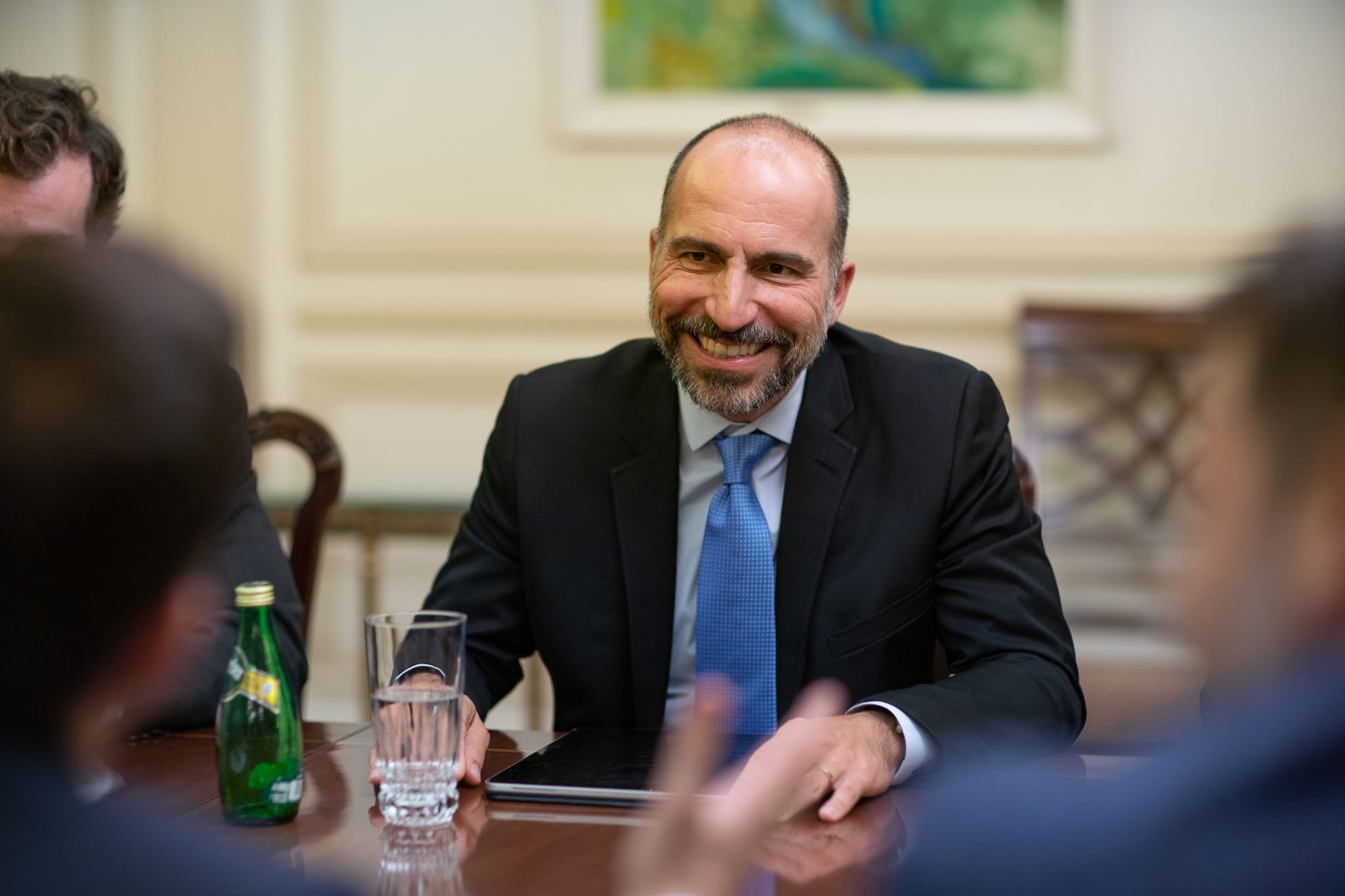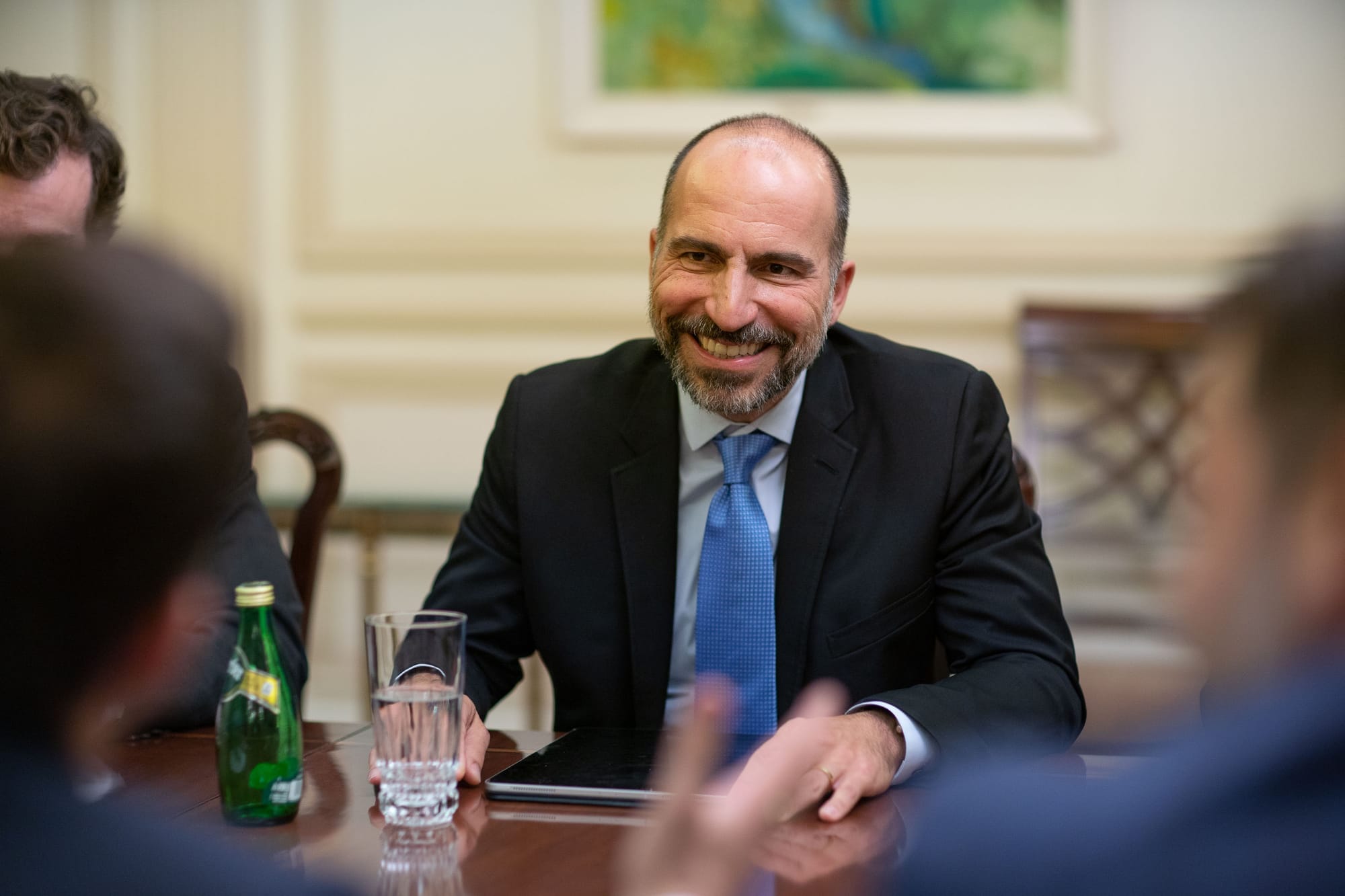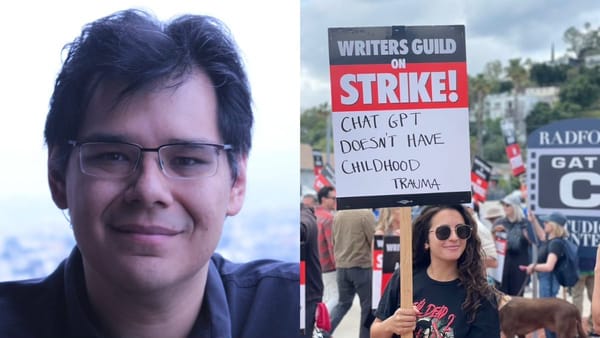
After nearly 15 years, Uber claims it’s finally turned an annual profit. Between 2014 and 2023, the company set over $31 billion on fire in its quest to drive taxi companies out of business and build a global monopoly. It failed on both fronts, but in the meantime it built an organization that can wield significant power over transportation — and that’s exactly how it got to last week’s milestone.
Uber turned a net profit of nearly $1.9 billion in 2023, but what few of the headlines will tell you is that over $1.6 billion of it came from unrealized gains from its holdings in companies like Aurora and Didi. Basically, the value of those shares are up, so on paper it looks like Uber’s core business made a lot more money than it actually did. Whether the companies are really worth that much is another question entirely — but that doesn’t matter to Uber. At least it’s not using the much more deceptive “adjusted EBITDA” metric it spent years getting the media to treat as an accurate picture of its finances.
Don’t be fooled into thinking the supposed innovation Uber was meant to deliver is finally bearing fruit. The profit it’s reporting is purely due to exploitative business practices where the worker and consumer are squeezed to serve investors — and technology is the tool to do it. This is the moment CEO Dara Khosrowshahi has been working toward for years, and the plan he’s trying to implement to cement the company’s position should have us all concerned about the future of how we get around and how we work.
Building Uber’s empire
Uber may have started as an alternative to black cars, but it quickly moved into direct competition with taxis. The company opened the floodgates by letting virtually anyone offer rides through its app, disregarding city regulations and heavily subsidizing the service — for drivers and riders — to get everyone on board. Its labor model not only built on previous deregulatory efforts to dismantle the protections taxi drivers had earned, but specifically pulled from an earlier (mostly failed) effort in the 1990s to dismantle taxi regulations that was pushed by groups receiving funds from libertarian billionaires Charles and David Koch. This time it succeeded, and that’s had major consequences.
The company long tried to claim it was empowering the workers who deliver food and rides through its apps, even as its statements over how much it was paying workers turned out to be lies and workers themselves vocally pushed back against the company’s narrative. Unfortunately, the media were less interested in listening to them for far too long. Shervin Pishevar, an Uber investor and mentor to cofounder Travis Kalanick, was more honest in 2013 when he told Inc Magazine that Uber was “in the empire-building phase.” You don’t usually build an empire to hand the power to the people you’re strengthening your hold over, which is exactly what Uber was doing.
Uber didn’t become a global player in transportation because it wielded technology to more efficiently deliver services to the public. The tens of billions of dollars it lost over the past decade went into undercutting taxis on price and drawing drivers to its service — including some taxi drivers — by promising good wages, only to cut them once the competition posed by taxis had been eroded and consumers had gotten used to turning to the Uber app instead of calling or hailing a cab.
As transport analyst Hubert Horan outlined, for-hire rides are not a service that can take advantage of economies of scale like a software or logistics company, meaning just because you deliver more rides doesn’t mean the per-ride cost gets significantly cheaper. Uber actually created a less cost-efficient model because it forces drivers to use their own vehicles and buy their own insurance instead of having a fleet of similar vehicles covered by fleet insurance. Plus, it has a ton of costs your average taxi company doesn’t: a high-paid tech workforce, expensive headquarters scattered around the world, and outrageously compensated executive management like Khosrowshahi, just to name a few.
How did Uber cut costs then? By systematically going after the workers that deliver its service. More recently, it took advantage of the cost-of-living crisis to keep them on board in the same way it exploited workers left behind by the financial crisis in the years after its initial launch. Its only real innovation is finding new ways to exploit labor.
Attacking labor rights
The Uber model fundamentally transformed the taxi industry, shifting power from drivers to the company’s C-suite. Under the taxi model, the number of vehicles on the road were regulated to ensure there weren’t too many drivers competing for a limited number of customers, as were fares to ensure predictability for the rider and a decent wage for the driver. It wasn’t perfect, since it meant customers could sometimes have to wait a while for a car, especially if city governments didn’t make sure they had the balance right. But the model had clear benefits and made sure the people delivering the service could make a decent living.
When Uber arrived on scene, it pretended it was targeting a powerful “taxi cartel” that was getting rich by exploiting city residents to justify blowing up the status quo. In place of the old model, it created a new one where it controlled the number of cars on the road and the fare people would pay. The decisions it made weren’t about creating sustainable jobs for drivers or giving customers predictable fares, but serving the company’s business goals: first taking market share, then turning a profit. Uber’s claims of driver empowerment hid how little control the workers really had when black-box algorithms manage every aspect of their work and it’s hard to even get a human on the line when things go wrong.
For years, workers have been protesting and organizing to try to claw back the power they lost when Uber sold labor exploitation as innovation to credulous governments that rolled out the red carpet for the supposed innovator. The most high-profile of these campaigns was in California, where workers were successful in pushing the state government to pass Assembly Bill 5 that effectively made them employees, only for the platform companies to rally behind a ballot measure that became known as Proposition 22. The companies deceptively presented it as a progressive policy to help workers in the gig economy when it actually nullified their victory and cemented their status as independent contractors.
In the years since, Uber has been taking that model around the world, promising that independent contractor status paired with some deceptively structured benefits that deliver little to workers is actually a win for them, even as those workers campaign for the employment rights they’ve been denied. In 2021, the UK Supreme Court ruled Uber had to treat its drivers as “workers,” which would include paying them for all their engaged time, but the company hasn’t followed through and workers had to take it back to court. In the EU, gig companies have successfully watered down the Platform Work Directive, which advocates hoped would extend employment rights to gig workers across the bloc. Meanwhile, Uber succeeded in denying workers in Washington state employee status and is backing a ballot measure to do the same in Massachusetts. I could go on, but I think you get the point.
Exploiting drivers and customers
As Uber has been fighting those battles, it’s also been rolling out a new way to further empower itself. Surge pricing is nothing new — it increased prices during periods of high demand — but in the past few years Uber rolled out dynamic pricing to take it to a whole new level. Dynamic pricing makes rider fares and driver pay much harder to predict by causing prices to shift according to more factors that are hidden from everyone but Uber itself, and it divorces the amount drivers are paid from the amount customers pay for the ride. Further, as part of its upfront pricing policy, Uber also removes any context on the fare — or pay, for a driver — that it offers: whether it’s high or low, what a base fare would be, and why it’s made that calculation.
Drivers compellingly argue that upfront pricing is designed to reduce their pay, as has been painstakingly detailed in a column by Columbia Business School professor Len Sherman for Forbes. Long-time Uber driver Sergio Avedian told him it was “the latest in a long line of earnings reductions” because it ensures “a collapse of my personal Utilization Rate if I refuse to accept lowball offers, or a collapse in my hourly earnings if I do.” Drivers feel the company is testing to see how low of a payment they’ll accept for a trip and it will penalize them if they refuse too many rides.
Law professor Veena Dubal calls this algorithmic wage discrimination because it allows companies like Uber “to personalize and differentiate wages for workers in ways unknown to them, paying them to behave in ways that the firm desires, perhaps as little as the system determines that they may be willing to accept.” These practices go the other way too, with the company testing to see how much a customer will pay so it can push up prices. For example, researchers in Belgium accused Uber of charging more for a ride if it detected the user’s phone battery was low. The move to upfront pricing means riders are no longer told the base fare so they can’t judge how much extra they’re being charged.
When Uber claimed its first ever quarterly profit using generally accepted accounting principles (instead of its questionable “adjusted EBITDA” metric) in the second quarter of 2023, Horan dug into the company’s numbers and found the improvement in its financial situation was in large part because of these dynamics: the company was pushing up fares and squeezing drivers so it could claim a bigger percentage of the fare for itself. Before the pandemic, Uber was getting about 22% of the customer fare, but by mid-2023, that number had risen to 28-29%, amounting to a transfer of “over $1 billion in revenue per quarter from drivers to Uber shareholders.”
Publicly admitting it’s doing that probably wouldn’t be a good look for Uber, especially given the reputation it’s developed for how it treats its workers and the growing complaints from customers over price and service quality. But as Khosrowshahi was running his victory lap over Uber’s annual profit, he did just that. On a February 7 call with investors, Khosrowshahi stated the company’s upfront fares were “targeting different trips to different drivers based on their preferences, or based on behavioural patterns.” That admission didn’t make it into all the stories about Uber finally turning a profit; it was reported by Gig Economy Project coordinator Ben Wray in Novara Media, an independent publication in the UK. In short, the CEO confirmed exactly what drivers and critics have been arguing for years.
Uber’s plan for dominance
While cementing the exploitation of drivers and hiking the fares of customers are key to Uber’s improving finances, there are a few other pieces of the larger plan Khosrowshahi is implementing that shouldn’t be ignored. Starting in 2019, he began shedding all the “big bets” that drove investor and public interest in Uber through the years it was hopeless unprofitable. Uber paid Lime $170 million to take over its Jump scooter and bike business in May 2020, then in December 2020 offloaded its self-driving vehicle division onto Aurora with a $400 million investment in the company and its flying-car project onto Joby for a $75 million investment.
Those deals took some big drains off Uber’s balance sheet, but that wasn’t all it was doing. Through the first half of 2020, Uber gutted its workforce by laying off a quarter of its staff — over 6,700 people — and closed offices around the world. Khosrowshahi also bragged months later about his successful outsourcing strategy of moving engineering talent to India where engineers could be paid lower wages. Uber’s engineering team in India had grown from 80 engineers in 2017 to about 600 people by mid-2020.
In addition to scaling up the campaign of lawsuits and lobbying to cement the independent contractor status of drivers and delivery workers, Uber set its sights on beleaguered taxi companies. It didn’t want them to regroup or for taxi unions like Elité Taxi in Barcelona to be able to challenge its empire. Showing just how much taxi companies had been cowed, Uber made a renewed effort to sign deals with them to have the Uber app send them customers — effectively putting Uber in control of rides to its one-time competitors.
The company signed deals with taxi firms in New York City, San Francisco, and Los Angeles. It got black cabs in London onto the app, and through agreements or acquisitions has achieved some degree of taxi cooperation in more than 30 countries around the globe. At the end of last year, it even signed a deal with the city of Cancun, Mexico. After once decrying the power of the “taxi cartel,” Uber has unsurprisingly decided that if it can control the conditions of the supposed cartel, that works just fine for its shareholders — but it’s unlikely to be very good for anyone else.
The Uber model’s cruelty
In her paper on algorithmic wage discrimination, Dubal called what companies like Uber do “the cruelty of hope.” Silicon Valley was sold to us as a source of prosperity and the path to a better future, but the entire plan of these companies is to appeal “to the desire to be free from both poverty and from employer control … while simultaneously ensnaring workers in structures of work that offer neither security nor stability.” Tragically, instead of defending their constituents, lawmakers continue to let workers be taken advantage of by Uber.
Khosrowshahi has achieved exactly what investors wanted from him. He was brought on after the board ditched Kalanick, but their decision was more about Kalanick’s reluctance to commit to taking the company public than the scandals that were engulfing him. Uber’s IPO ended up being a flop, but now its market capitalization is over $140 billion. That’s good news for Khosrowshahi. In 2019, the board awarded him an incentive bonus of stock options as long as he could keep the market cap above $120 billion for 90 consecutive days. He’s now on his way to making off with as much as $50 million, and just in time too: the bonus expires in September.
After being unable to turn a profit for well over a decade, Uber seems to have finally gotten there. But it didn’t do it by building a sustainable business that benefits all its stakeholders. To get to this point, it fired thousands of workers, hiked the prices for its millions of customers, and further turned the screws on the people most important to its business: the drivers and delivery workers. They need to suffer so investors can get a $7 billion share buyback and a maybe even a dividend.
Uber is a scourge on our transport system and an enemy of labor rights. It’s setting itself up to make sure it doesn’t go anywhere. We’d be much better off if it doesn’t succeed.










Member discussion